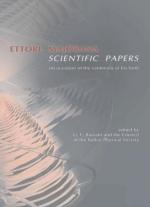|
This section contains 326 words (approx. 2 pages at 300 words per page) |
World of Physics on Ettore Majorana
Ettore Majorana played an influential role in the development of atomic physics in the 1930s. First a student, then coworker with noted Italian physicist Enrico Fermi, in 1937 Majorana elaborated a symmetrical theory of weak interaction, where the neutrino, an elementary particle emitted during the decay of other particles, is identical to the antineutrino.
Born in Sicily in 1906, Majorana was the youngest son of physicist Fabio Majorana. Young Ettore showed early genius in mathematics and physics, but was also noted to have an eccentric personality. Majorana moved with his family to Rome and later entered the University of Rome to study engineering. While at the university, Majorana changed his focus to physics, earning his degree in 1930. As a member of a team of young Italian physicists, Majorana became known, along with Italian-born American physicist Enrico Fermi and others, as one of "the boys of via Panisperna" involved in fundamental research on artificially induced radioactivity. Building upon these fundamental works, Fermi went on to win a Nobel Prize in 1938.
Majorana was named professor of theoretical physics at the University of Naples in 1938. During a boat trip from Palermo to Naples in March of the same year, Majorana suddenly disappeared. Although two notes were found, one declining the university position and the other expressing intent to end his life, investigations found no proof of Majorana's actions or whereabouts. At the time, Majorana was 31 years old.
Fermi, before his death in 1954, said of his former colleague, "There are many categories of scientists... There are also people of first class, who make great discoveries, fundamental for the development of science. But then there are the geniuses, like [Galileo] Galilei and Newton. Well, Ettore Majorana was one of them."
Today, the Ettore Majorana International Center for Scientific Culture in Erice, Sicily, promotes international collaboration in science and technology between researchers throughout the world. Founded by the Sicilian government in 1963, the center is also home to the World Federation of Scientists.
|
This section contains 326 words (approx. 2 pages at 300 words per page) |


